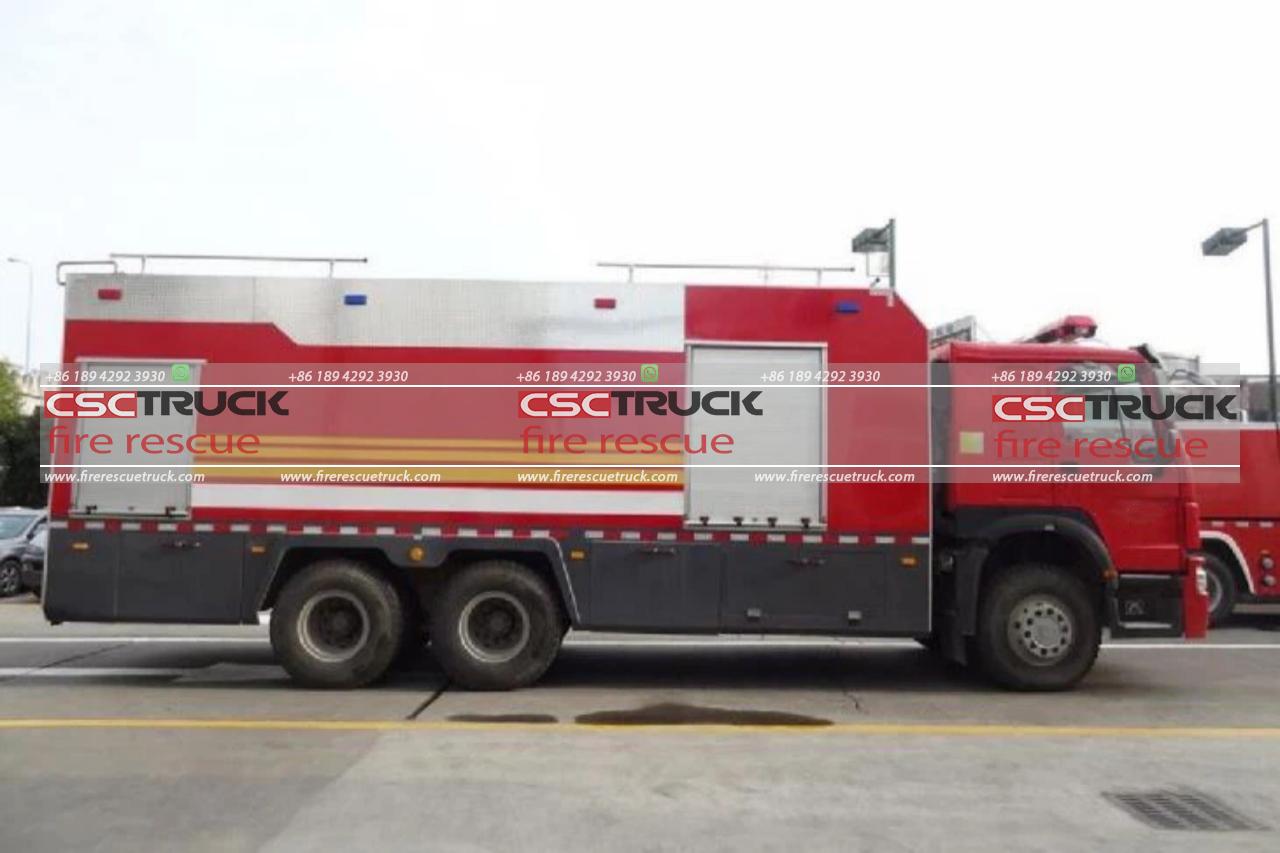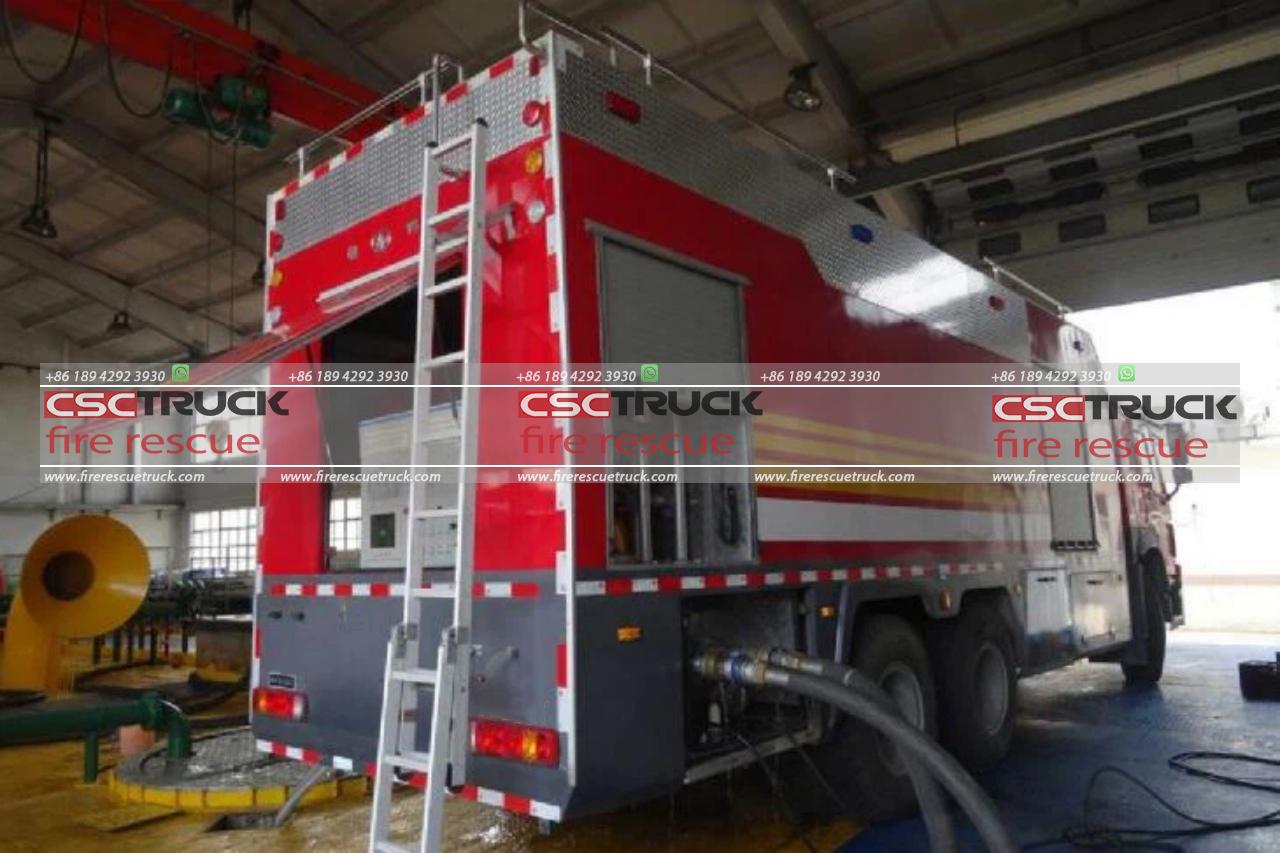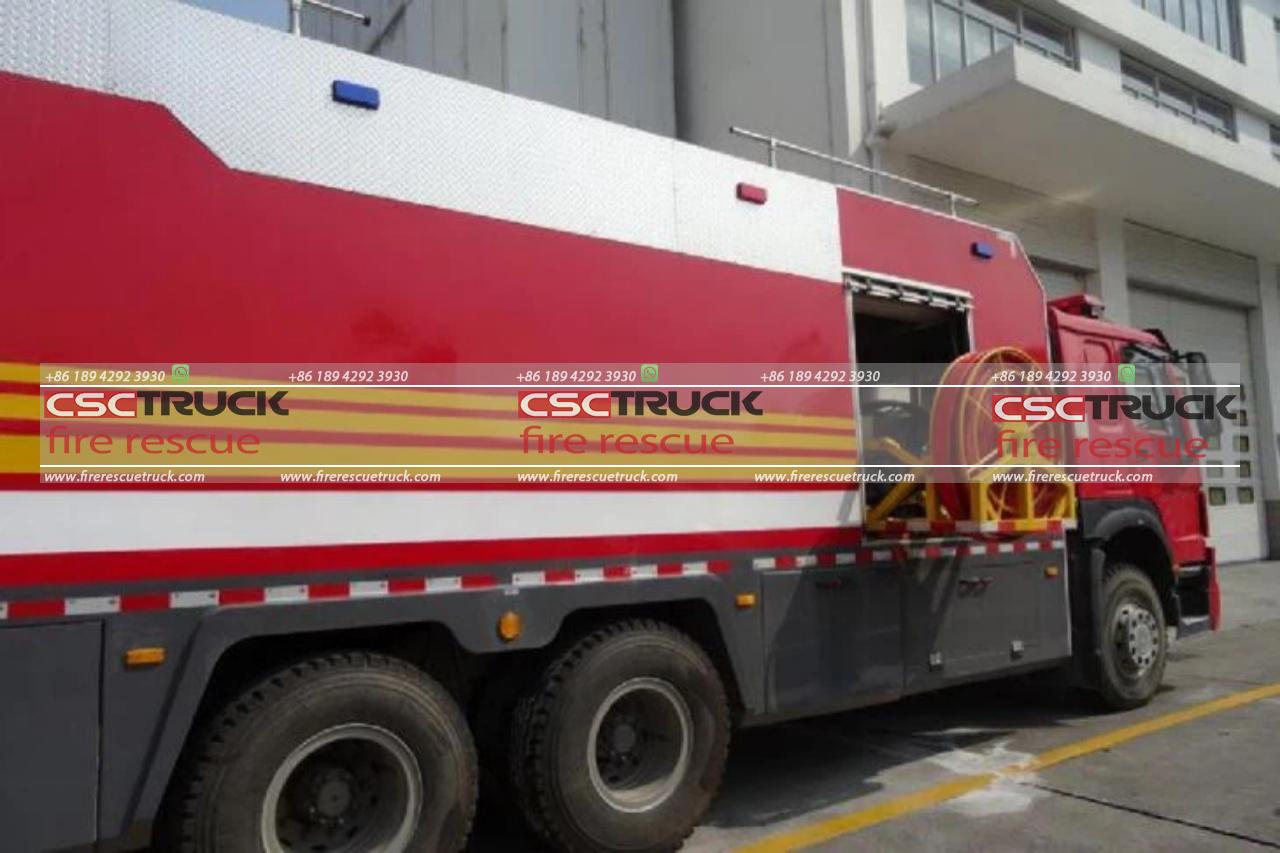Foam Transfer Truck: Specialized Foam Transfer Trucks for Efficient Fire Suppression
In the realm of fire suppression, efficiency, reliability, and effectiveness are paramount. Traditional fire suppression techniques often rely on water, which can be insufficient for certain types of fires, especially those involving flammable liquids and gases. This is where foam transfer trucks come into play. These specialized vehicles are designed to carry and deploy firefighting foam, a substance that can smother fires more effectively than water in many situations. In this article, we will explore the importance of foam transfer trucks, their design and operation, and their role in modern fire suppression strategies.
The Importance of Foam Transfer Trucks
Foam transfer trucks are essential for dealing with high-risk fire scenarios that water alone cannot handle. Flammable liquids, such as gasoline, oil, and certain chemicals, pose a unique challenge because water can spread these substances rather than extinguish them. Firefighting foam, however, forms a blanket over the fuel, cutting off the fire’s oxygen supply and preventing re-ignition.
These trucks are particularly crucial in industrial settings, airports, and chemical plants, where large quantities of flammable materials are stored and transported. In these environments, the rapid deployment of firefighting foam can mean the difference between a contained incident and a catastrophic disaster.

Design and Components of Foam Transfer Trucks
Foam transfer trucks are highly specialized vehicles equipped with several key components that enable them to store, mix, and deploy firefighting foam efficiently. The main components include:
1. Foam Tanks: These tanks store the foam concentrate before it is mixed with water. The size of the tanks can vary depending on the truck’s intended use, with some trucks carrying several thousand gallons of foam concentrate.
2. Proportioning Systems: These systems ensure that the correct ratio of foam concentrate to water is maintained. This is critical because an incorrect mixture can render the foam ineffective.
3. Pumps and Nozzles: High-capacity pumps and specialized nozzles are used to mix the foam concentrate with water and deploy it at high pressure. The nozzles are designed to produce the appropriate foam type, whether it’s low, medium, or high expansion foam.
4. Control Systems: Modern foam transfer trucks are equipped with sophisticated control systems that allow operators to manage the mixing and deployment of the foam precisely. These systems often include automated features to enhance accuracy and efficiency.
Operation of Foam Transfer Trucks
The operation of a foam transfer truck involves several steps, each critical to ensuring that the firefighting foam is deployed effectively.
1. Preparation: Before arriving at the scene of a fire, operators must ensure that the foam concentrate tanks are filled and that all systems are functioning correctly. This includes checking the pumps, proportioning systems, and control panels.
2. Deployment: Upon arrival at the scene, operators connect the truck to a water supply, if available, and begin mixing the foam concentrate with water using the proportioning system. The mixed foam is then pumped through hoses to the nozzles, where it is sprayed onto the fire.
3. Application: The type of foam used and the method of application depend on the nature of the fire. For example, a low-expansion foam might be used for flammable liquid fires, while high-expansion foam could be more effective for large, enclosed spaces.
4. Monitoring and Adjustment: Operators continuously monitor the effectiveness of the foam and make adjustments as needed. This may involve changing the foam-to-water ratio, adjusting the spray pattern, or repositioning the nozzles.

Advantages of Foam Transfer Trucks
Foam transfer trucks offer several advantages over traditional fire suppression methods:
1. Enhanced Fire Suppression: Foam is more effective than water at suppressing fires involving flammable liquids and gases. It smothers the fire, cutting off its oxygen supply, and can prevent re-ignition.
2. Reduced Water Damage: Using foam instead of water can minimize water damage to property and the environment. This is particularly important in industrial settings where water runoff can carry hazardous materials.
3. Versatility: Foam transfer trucks can be used in a variety of settings, from industrial plants to airports to urban areas. They are capable of handling different types of fires with various foam formulations.
4. Efficiency: The ability to quickly deploy and manage firefighting foam means that fires can be contained more rapidly, reducing the risk of spread and escalation.
Challenges and Considerations
Despite their advantages, foam transfer trucks also present certain challenges and considerations:
1. Cost: Foam transfer trucks and the foam concentrate they use can be expensive. This can be a significant investment for fire departments and industrial facilities.
2. Training: Proper training is essential for operators to use these trucks effectively. This includes understanding the different types of foam, the correct mixing ratios, and the appropriate deployment techniques.
3. Maintenance: Regular maintenance is crucial to ensure that all components of the foam transfer truck are in working order. This includes checking the foam tanks, proportioning systems, pumps, and nozzles.
4. Environmental Impact: Some types of firefighting foam contain chemicals that can be harmful to the environment. It is important to use environmentally friendly foam concentrates and to manage foam runoff properly to minimize environmental impact.

The Future of Foam Transfer Trucks
As technology advances, foam transfer trucks are becoming more sophisticated and efficient. Innovations in foam formulations are leading to more effective and environmentally friendly firefighting solutions. Additionally, advancements in automation and control systems are making it easier for operators to manage the deployment of foam accurately.
The integration of data and analytics is another promising development. By using data from past incidents, fire departments can better understand the most effective strategies for different types of fires and optimize their use of foam transfer trucks.
In conclusion, foam transfer trucks are a critical tool in modern fire suppression. Their ability to effectively handle fires involving flammable liquids and gases makes them indispensable in many high-risk environments. While they present certain challenges, the benefits they offer in terms of enhanced fire suppression, reduced water damage, versatility, and efficiency make them a valuable asset in the fight against fires. As technology continues to evolve, we can expect these specialized vehicles to become even more effective and essential in protecting lives and property from the devastating effects of fires.







